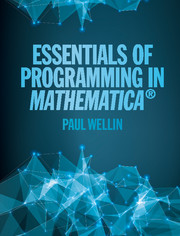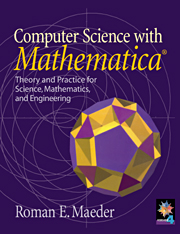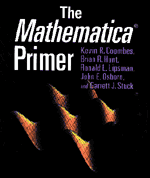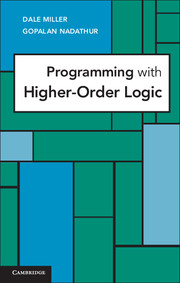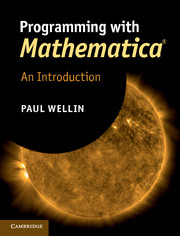An Introduction to Programming with Mathematica®
Starting from first principles, this book covers all of the foundational material needed to develop a clear understanding of the Mathematica language, with a practical emphasis on solving problems. Concrete examples throughout the text demonstrate how Mathematica can be used to solve problems in science, engineering, economics/finance, computational linguistics, geoscience, bioinformatics, and a range of other fields.
The book will appeal to students, researchers and programmers wishing to further their understanding of Mathematica. Designed to suit users of any ability, it assumes no formal knowledge of programming so it is ideal for self-study. Over 290 exercises are provided to challenge the reader's understanding of the material covered and these provide ample opportunity to practice using the language. Mathematica notebooks containing examples, programs and solutions to exercises are available from www.cambridge.org/wellin.
- Comprehensive introduction to programming in Mathematica, including the latest version, written by experts in the field
- New chapters written to incorporate new features in Versions 4 through 5.1
- Future updates, Mathematica notebooks and solutions to the hundreds of exercises are available at www.cambridge.org/0521846781
Reviews & endorsements
' … has been revised from cover to cover, with many organizational changes and a substantial amount of new material. It includes coverage up to and including Mathematica 5.1. While the second edition was very well received, the third edition strikes me as an essential document … I was struck immediately by the lucidity of the prose …This is not the first book to be written in Mathematica, but it is far and away the most beautiful. From page layout to production quality, the work is on par with any technical text produced by any publisher.' Bruce Torrence, The Mathematica Journal
'there are some 300 books … about Mathematica in various contexts. If you want an enjoyable introduction to programming, this is the one to get.' Mathematics Today
Product details
May 2005Adobe eBook Reader
9780511079108
0 pages
0kg
65 b/w illus. 280 colour illus. 20 tables 290 exercises
This ISBN is for an eBook version which is distributed on our behalf by a third party.
Table of Contents
- 1. An introduction to Mathematica
- 2. The Mathematica language
- 3. Lists
- 4. Functional programming
- 5. Procedural programming
- 6. Rule-based programming
- 7. Recursion
- 8. Numerics
- 9. Graphics programming
- 10. Front-end programming
- 11. Examples and applications
- 12. Writing packages
- Appendix A: how expressions are evaluated
- Appendix B: debugging.


